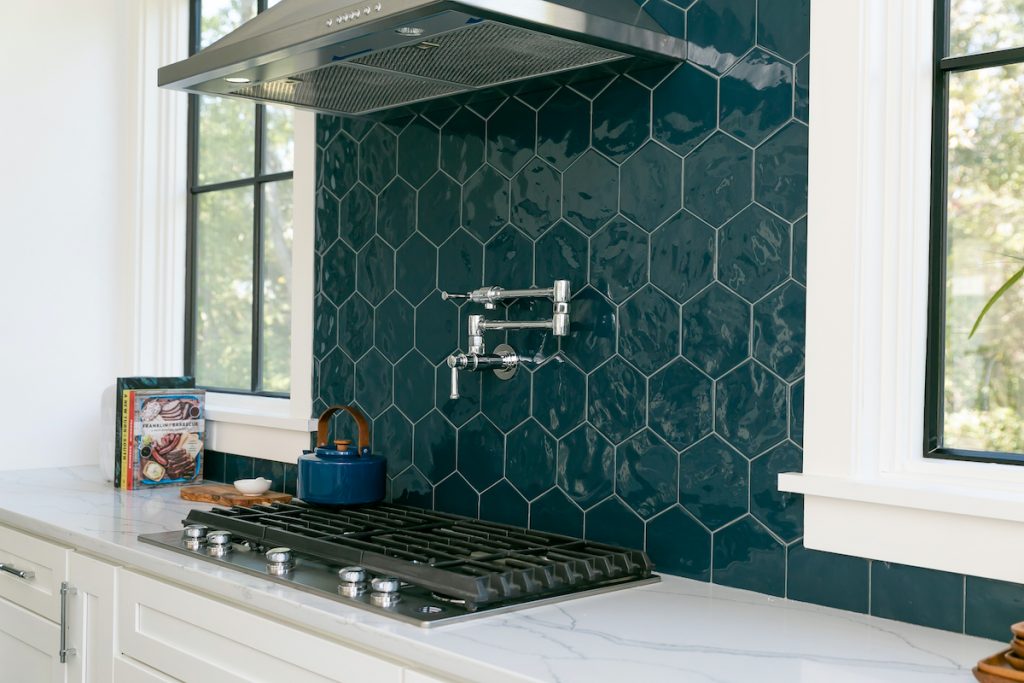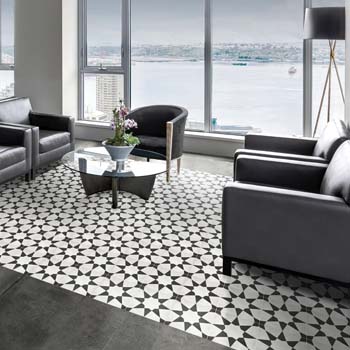Choosing your tile color, shape, and layout are all important parts of designing your dream space. However, when it comes to the part that pulls the entire design together, we save the best for last – and that’s grout.
Grout is generally defined as a mixture of water, cement, and other binding agents that is applied between the joints of your tiles after installation. An extremely important part of the tile installation process, grout bonds and adheres the tiles together while also preventing dirt and debris from getting between and underneath your tile.
Apart from the technical benefits, grout also has the power to transform the look of your tile design with an array of color options. Read on as Garden State Tile reviews the key factors to consider when selecting the perfect grout for your design.
TYPES OF GROUT
Grout has come a long way in the last few decades, with technology allowing for a variety of grout types fit for virtually any application. The most common types of grout available today are sanded, unsanded, and epoxy grouts.
Sanded grouts are used for joints measuring 1/8” or larger due to its resistance to shrinkage and cracking, allowing for more advanced durability in high-traffic areas. Unsanded grout is best suited for smaller grout joints measuring at 1/8” wide or less resulting in a smooth texture that clings to narrow joints. Last, epoxy grouts are often used in spaces where the tile might be exposed to harsh cleaning chemicals, acids, or oils due to its non-porous nature.
Scientific breakthroughs in technology have allowed for the development of high-performance grouts that take all of the above to the next level in their own category. Available from Garden State Tile, Spectralock 1 by Laticrete is a pre-mixed grout that offers the superior strength of an epoxy grout without any of the epoxy resins. Hydroment Vivid Grout by Bostik is a rapid curing cement grout that requires no sealers, offers superior stain resistance, emits zero VOCs, and is open to foot traffic in as little as four hours.
JOINT SIZES

Your tile installer should provide size recommendations based on the type of material, where it is being installed, the substrate of the space, and the size format of tile.
Tighter grout joints make for a cleaner, more sleek appearance while also showing off more of the variation from tile to tile. A larger grout joint helps to accommodate irregular edging and prevent lippage, while also creating a more contrasting appearance between pieces of tile.
For mosaic sheets, the grout joint is almost always pre-determined by the space between the mosaic chips and installers should follower that same joint from sheet to sheet for design consistency.
COLOR AND CONTRAST

While the size and shape of your tile are important in the overall design, the color of your grout has opportunity to influence the design complexity of any space – creating dramatic looks or a more traditional appeal.
To accentuate the shape of more unique tiles, such as hexagons, a contrasting grout will increase the visibility of each individual piece to create a statement on floors and walls. For traditional marble-looks a grout that matches the face of the tile is recommended to achieve a more clean and minimalistic style.
Grouts with vibrant colors such as pink, blue, orange, or green steal the show all on their own, and are often selected as a contrast to simple white subway tile or to make unique patterns pop. Glitter additives are also available for designs that really shine!
KEEPING GROUT JOINTS CLEAN

Grout joints can often collect dirt and debris, but with some simple routine cleaning it’s easy to keep your grout looking like new for years to come.
HOW TO CLEAN YOUR GROUT:
- Wipe Down with Hot Water: Loosen up any surface dirt and grime by wiping down your grout lines with hot water. Sweep up any excess debris.
- Apply Grout Cleaner: Apply a grout cleaner directly to the grout lines and let sit for 10-15 seconds. Scrub the grout with a soft bristled brush (such as an unused toothbrush) to clean., It’s a good idea to clean your grout monthly in order to avoid hard to remove stains.
- Steam Clean Your Worst Stains: For difficult stains, steam cleaning is an effective and environmentally friendly method for cleaning grout. When using a steam cleaner, it’s important to work one small section at a time and quickly clean up the dirty water so it does not settle back into the grout.
For additional information on selecting the perfect grout for your project, a local Garden State Tile Representative will be happy to assist you. For more tips, products, and trends from Garden State Tile, be sure to follow us on Instagram, Twitter, Facebook, and Pinterest.
 Go Back
Go Back



